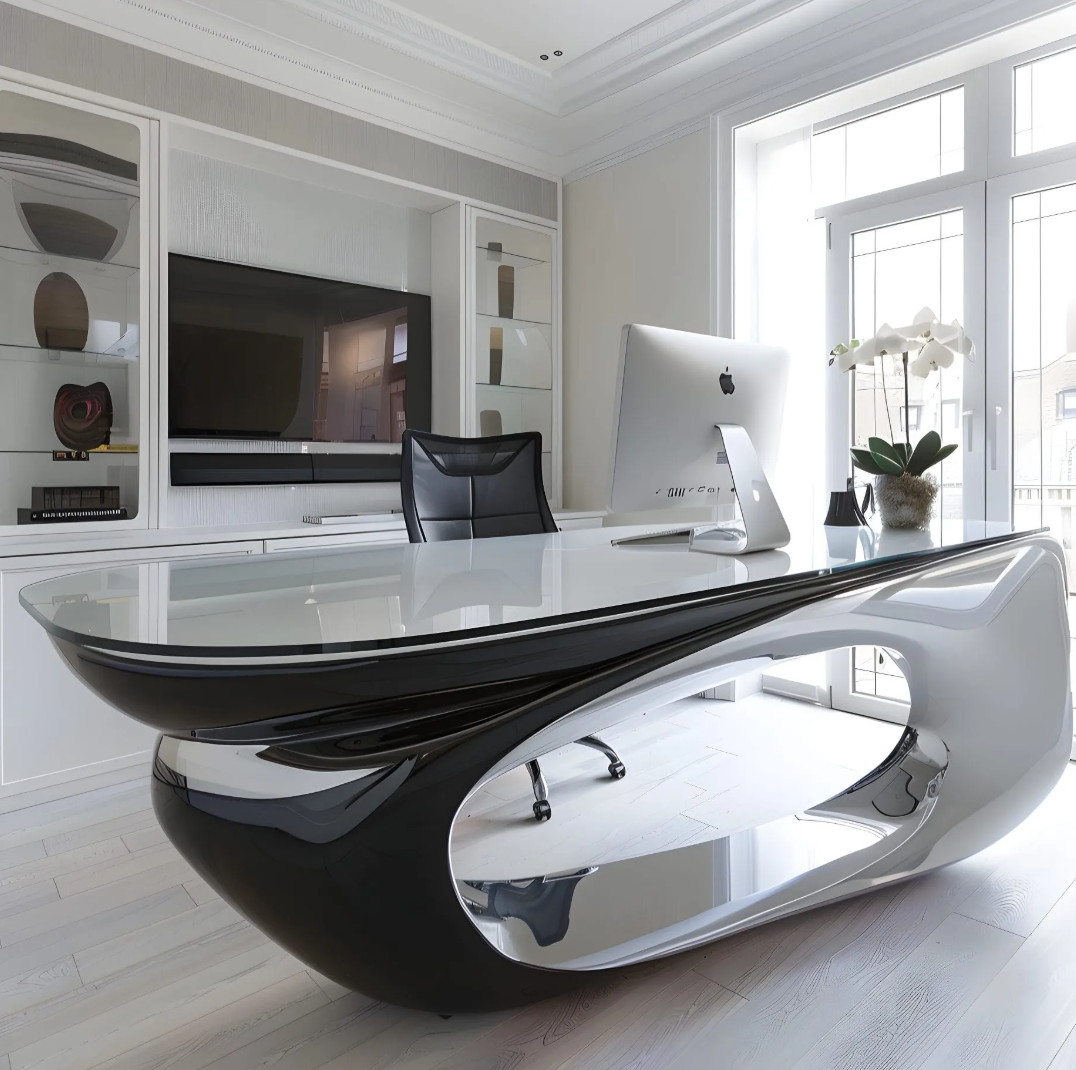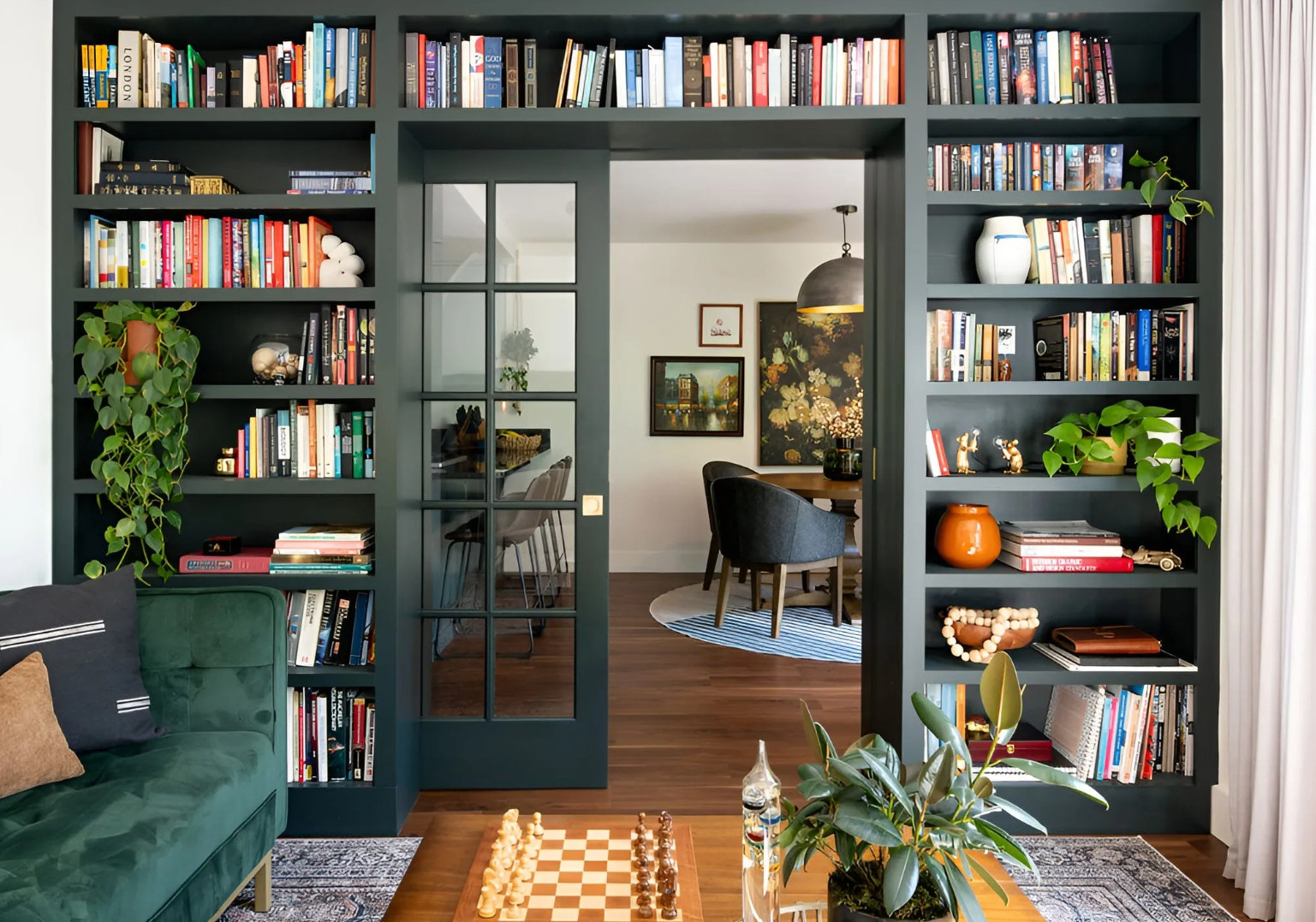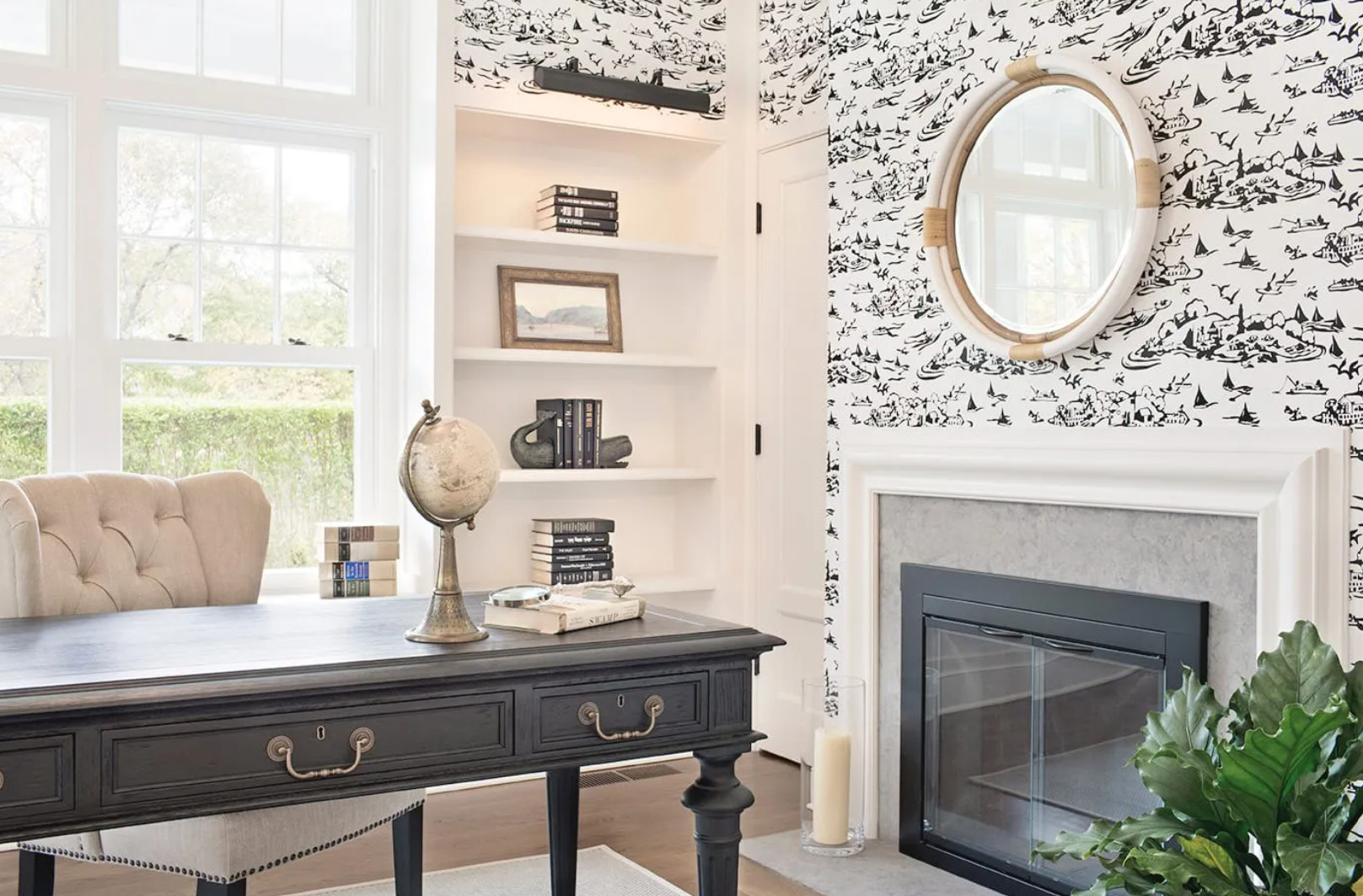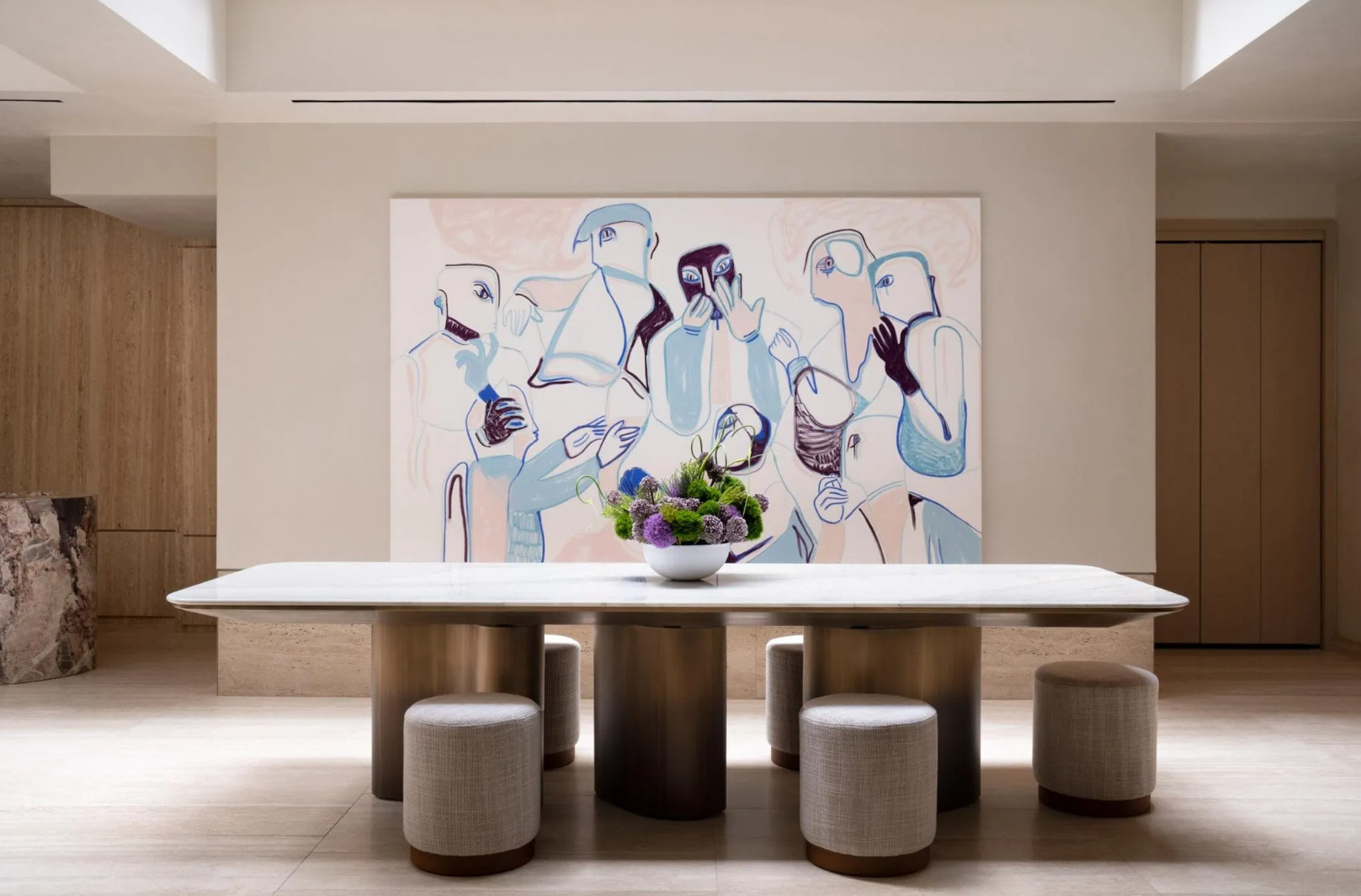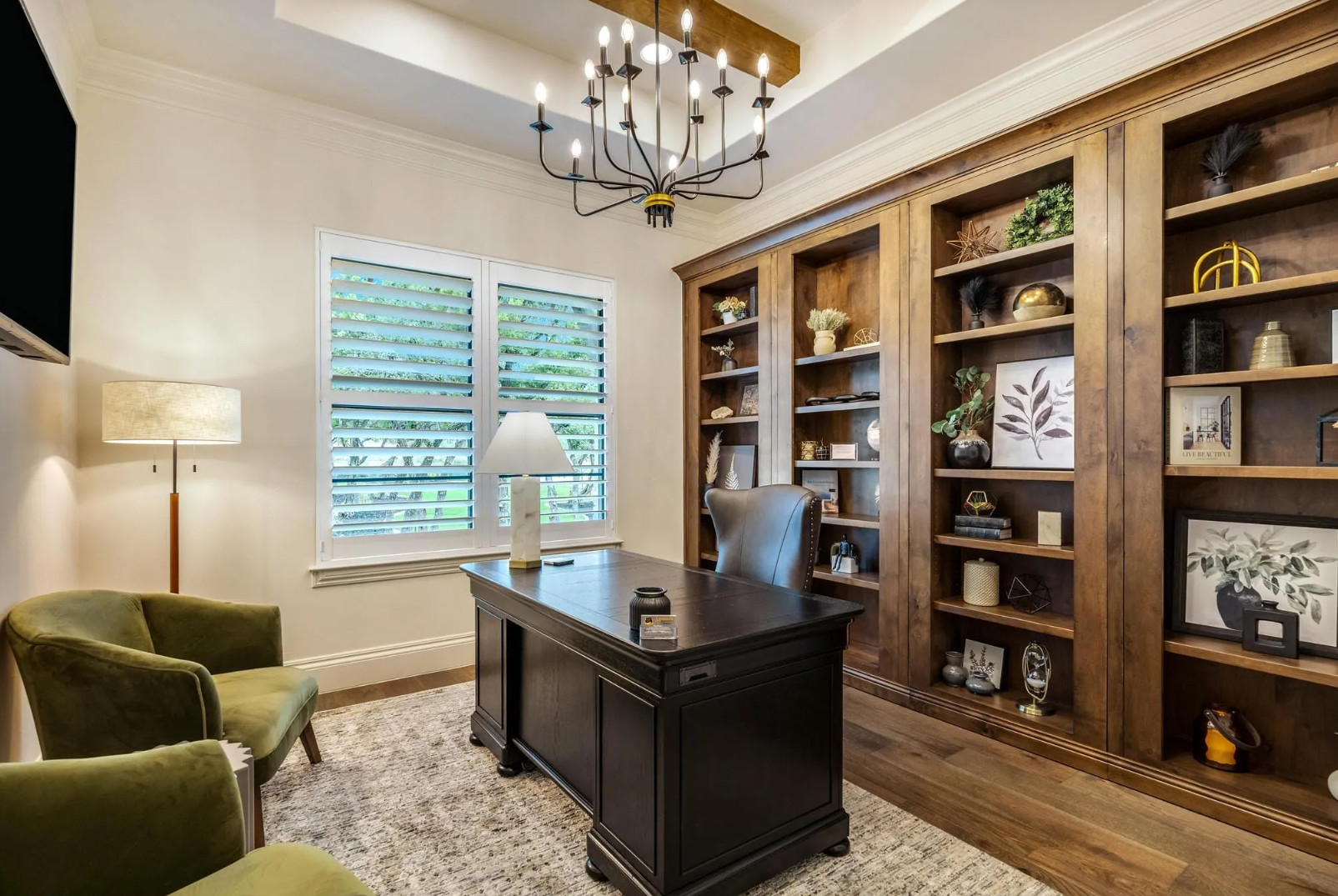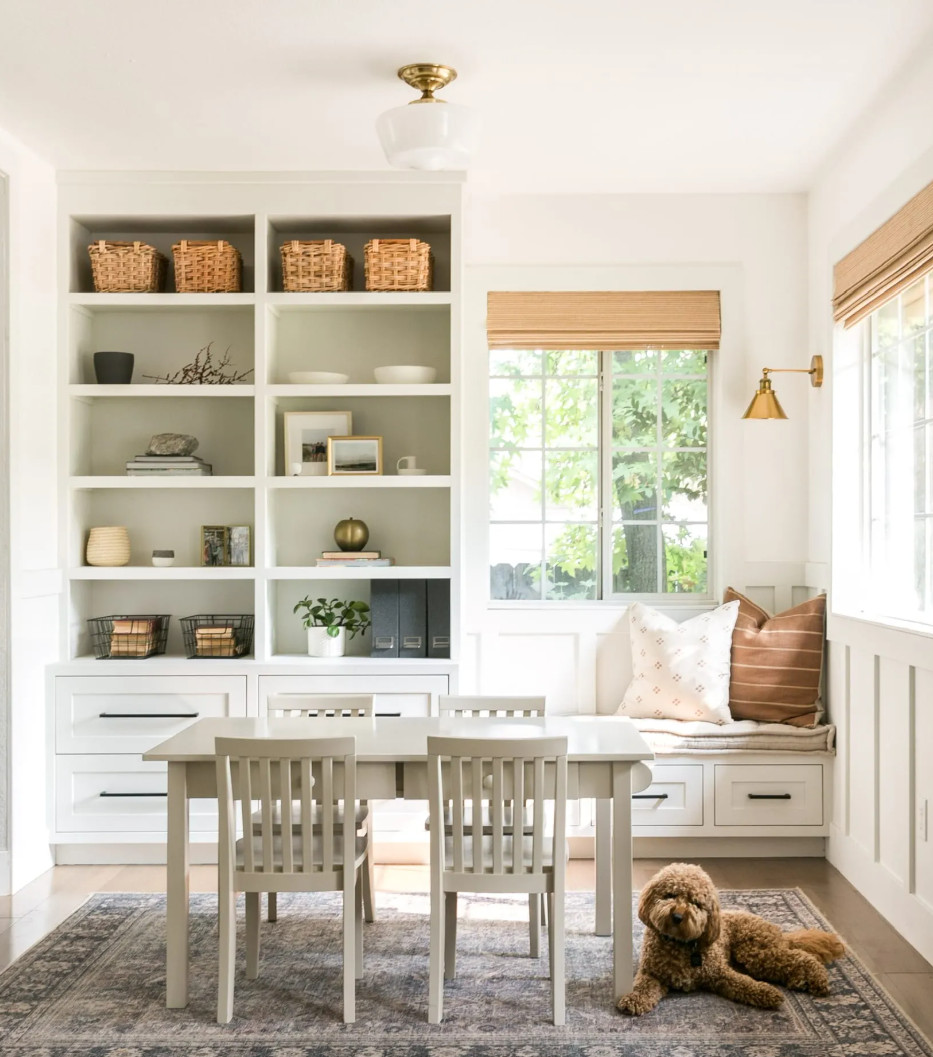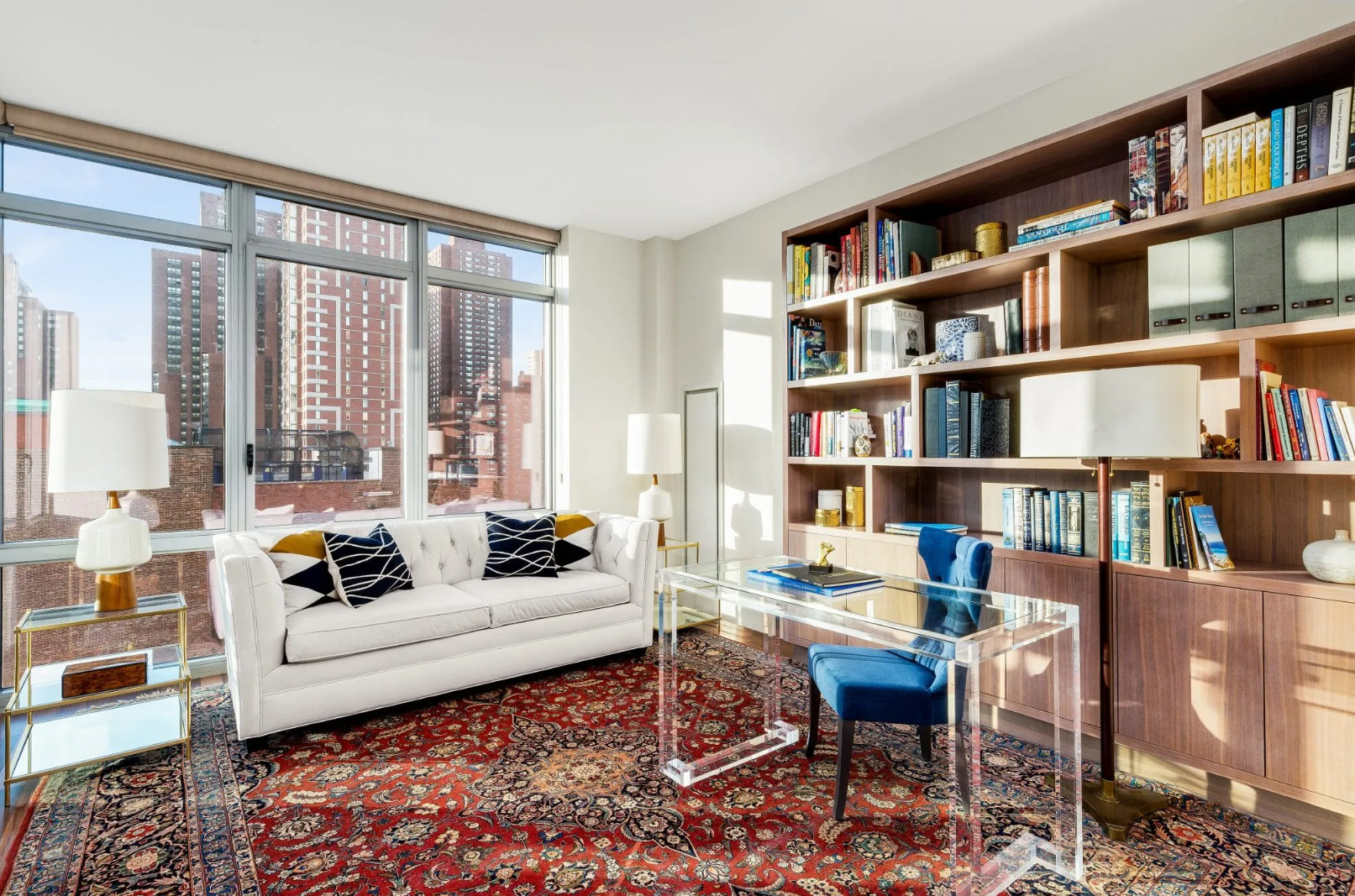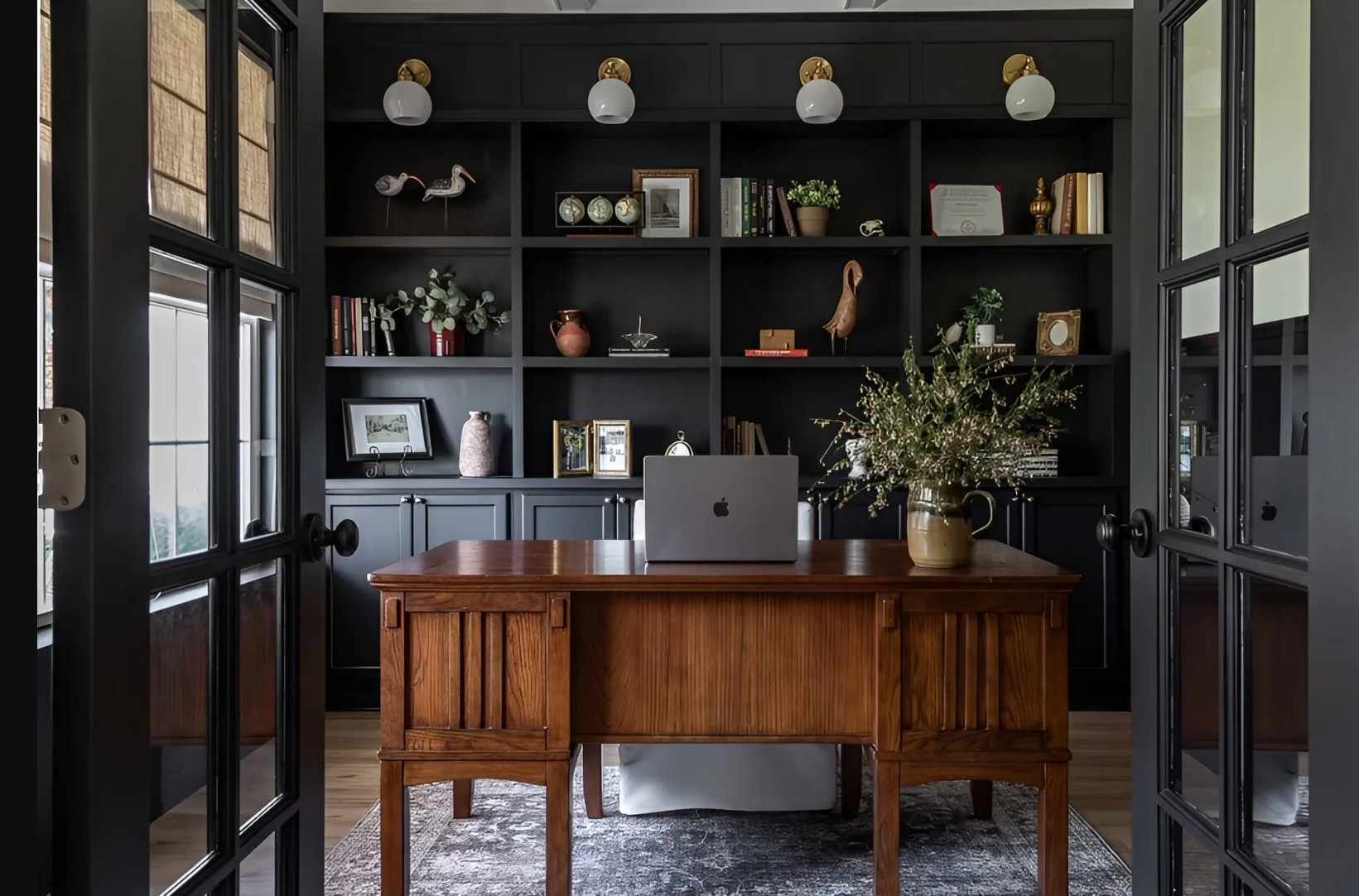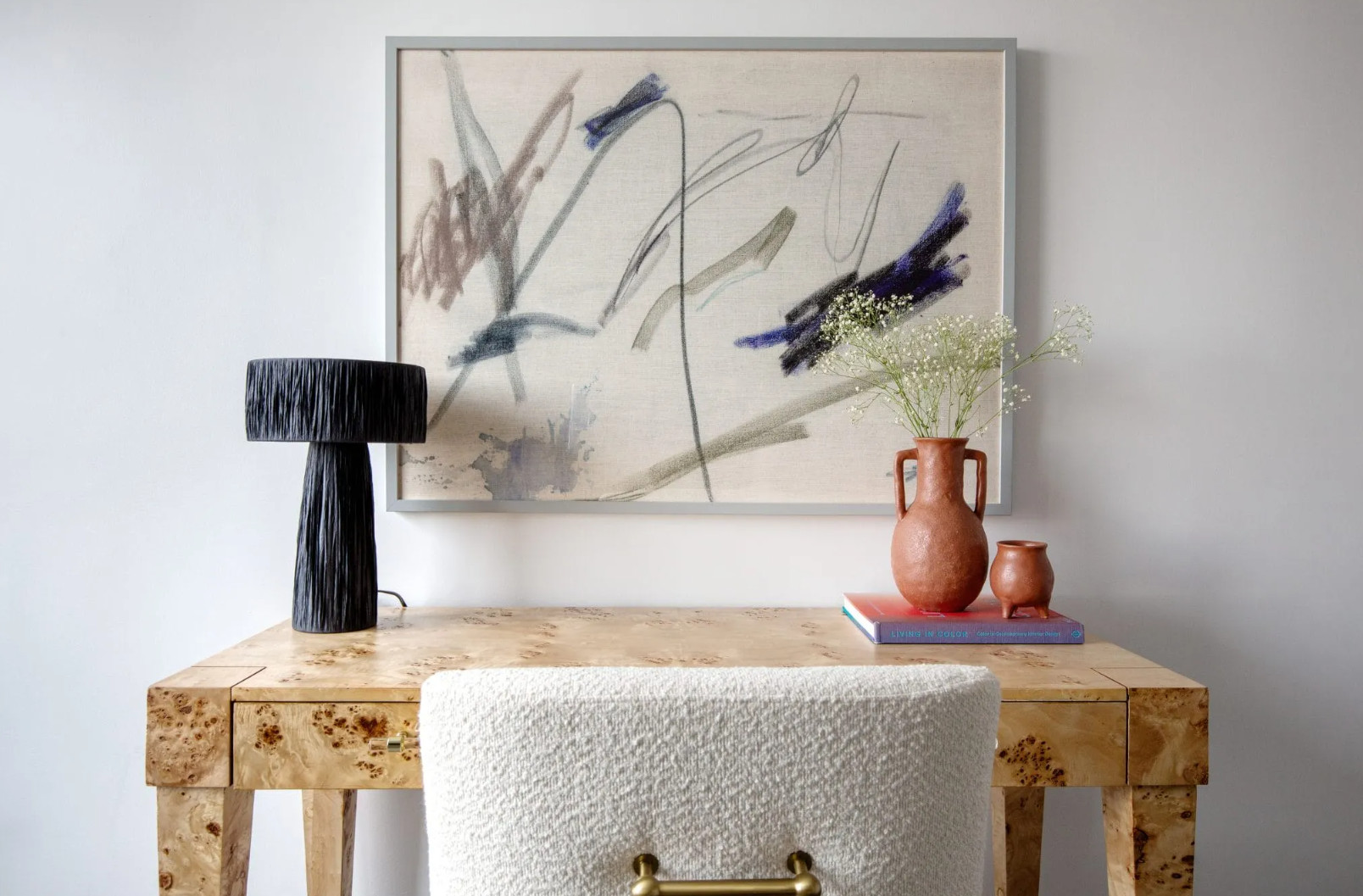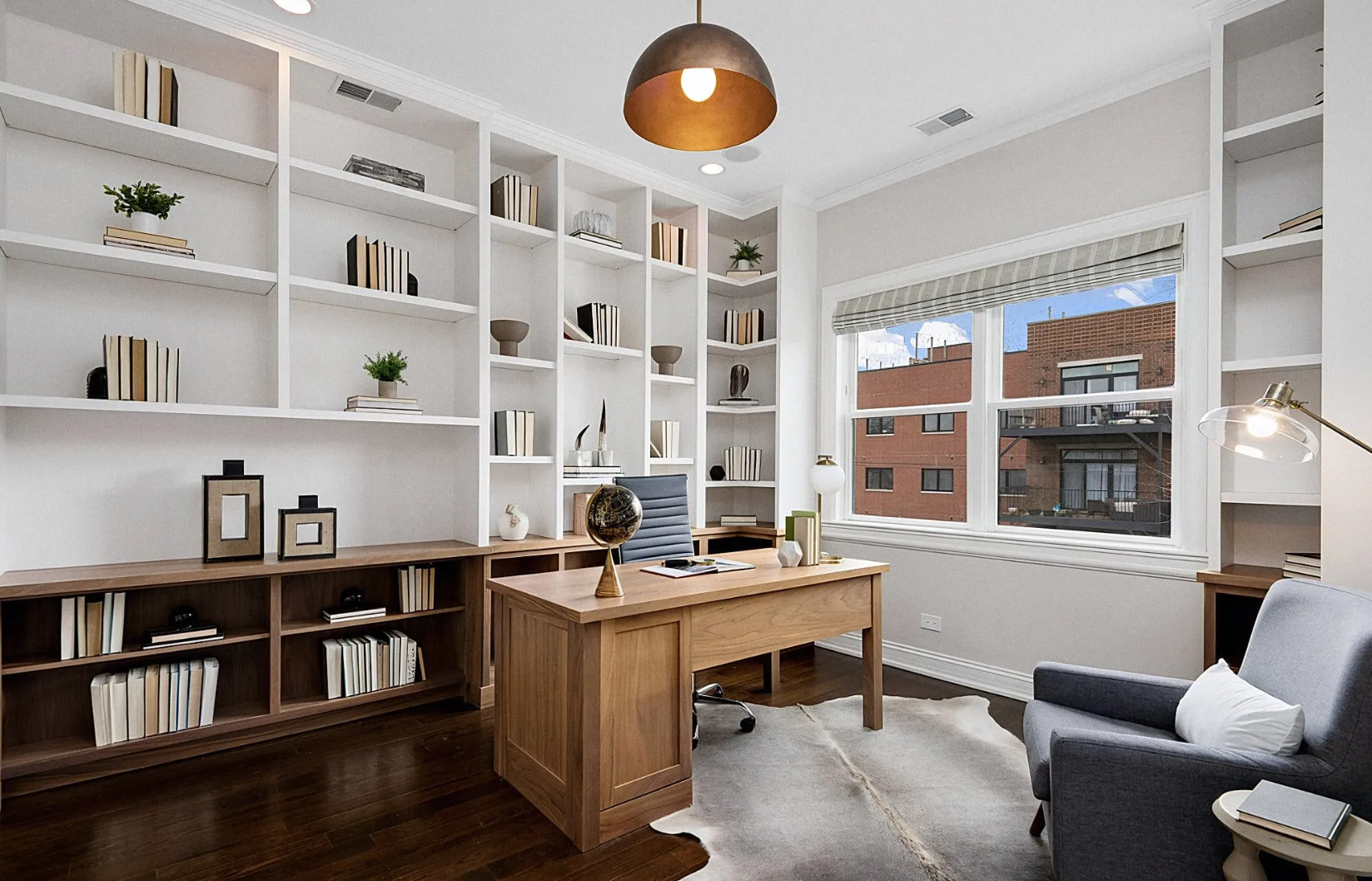In 2026, home office design goes beyond simple optimization and evolves into creating environments that support mood, rhythm, and lifestyle. These are subtle shifts, free of loud statements, yet rich in attention to detail – and it is precisely those details that define the new standard of efficiency.
1. Tactile Naturalness
At the center are materials with distinctive textures and natural imperfections. Solid wood replaces veneer, cast composites remain matte with visible inclusions, and tabletops show uneven pigment distribution, revealing the trace of the tool. The goal is not flawless smoothness, but a texture that serves both beauty and practicality.
2. Dark Colors as a Foundation
Deep tones become a visual anchor. The Restorative Darks palette from Sherwin-Williams, with shades like Plum Brown or Rojo Marrón, lends spaces focus and depth. They are applied in built-in furniture, on walls, or around windows to foster an atmosphere of concentration.
3. Multi-Zonal Layouts
The home office is no longer confined to a single desk. Work points spread across the home: a console in the hallway for standing work, wide windowsills for calls and reading, light glass dividers, or low partitions. Each zone adapts to light, sound, and user needs.
4. Invisible Technology
Technology integrates seamlessly into the interior instead of dominating it. Outlets and ports are camouflaged into materials, wireless charging is built into tabletops, and under-shelf lighting adjusts to work zones. Tech is present but never distracting.
5. The Perfect Video Call Backdrop
With Zoom meetings still a daily practice, space architecture accounts for it. Backgrounds are shaped by layered shelving and modular panels. Lighting enhances depth: hidden strips create soft diffusion, while task lighting balances the frontal view.
6. Craft Authenticity and Longevity
Instead of mass production, unique, handcrafted items take center stage. A locally made desk, marked with natural tool traces, looks authentic and lasts for years. Such pieces become long-term investments, preserving both character and durability.
7. Built-In Wellness Zones
The self-care trend flows directly into the workspace. Meditation niches with soft finishes, integrated fitness equipment, aroma diffusers, and hydroponic air-purifying systems — all discreetly blended in, all supporting energy renewal.
8. Personal Details
Artifacts become part of the design. A keepsake, a vintage tool, or ceramics can sit naturally on modern shelves, infusing the space with personal meaning. It’s not just a workplace anymore, but a space with its own story.
9. A Pastel Palette
Muted pastels replace the austere tones of previous years. Sage green, powder pink, and delicate blue create a soft environment conducive to long focus. Accessories and furniture follow the same calm color line.
10. Smart Ergonomics
Seating and furniture respond to the user’s posture. Sensor mats capture pressure and weight distribution, while structures automatically adjust. This is a new level of ergonomics — where design adapts to the body, not the other way around.
✨ In 2026, the home office becomes more than a place of work — it transforms into a complete environment that sustains balance, focus, and personal inspiration.
Download calculator
and presentation
solution packs
and presentation
solution packs
for accurate cost calculation
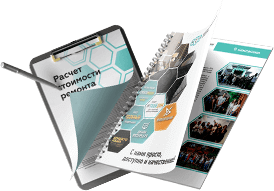
Enter your phone number and download the calculator





